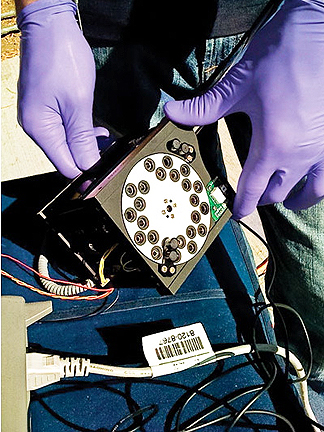
Photo credit: Charlie Friedericks/NASA — The O/OREOS chemistry cube contains 24 sample compartments and a spectrometer, all packed into a 10-cm3 box.
Scientists will apply the knowledge they gain from O/OREOS to plan future experiments in the space environment to study how exposure to space changes organic molecules and biology. These experiments will help answer astrobiologys fundamental questions about the origin, evolution and distribution of life in the universe. Approximately 19 minutes after launch, O/OREOS separated from the Minotaur IV rocket and entered low Earth orbit at an altitude of approximately 400 miles. About three hours after launch, amateur radio operator, Marco Bruno, in Torino, Italy received the first signals from O/OREOS.
After a spacecraft checkout period, O/OREOS autonomously initiated the first of two experiments, which will last approximately six months and transmit data for as long as a year. The second experiment will start on Friday, Nov. 26, 2010. Now that O/OREOS is activated and has begun transmitting radio signals to ground control stations at Santa Clara University, the nanosatellite will send mission data to the NASA Mission Management and science teams at Ames for analysis.
The STPSat-2 launch was the STP's 26th small launch vehicle mission. The Air Force Space Command's Space and Missile Systems Center's Space Development and Test Wing at Kirtland AFB, N.M., has overall management of the STPSat-2 mission. The Small Spacecraft Division at Ames manages the O/OREOS payload and mission operations with the professional support of staff and students from Santa Clara University, Santa Clara, Calif., in support of the Astrobiology Small Payloads program under the Planetary Science Division of the Science Mission Directorate at NASA's Headquarters in Washington.

